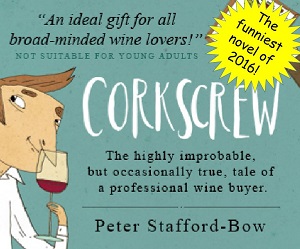 In order to help kickoff the BevFluence Effervescence Unleashed program I participated in a book-sparkling wine collaboration between Rebecca Rosenberg's Champagne Widows: First Woman of Champagne, Veuve Clicquot and the Breathless Brut from Breathless Sparking Wines.
In order to help kickoff the BevFluence Effervescence Unleashed program I participated in a book-sparkling wine collaboration between Rebecca Rosenberg's Champagne Widows: First Woman of Champagne, Veuve Clicquot and the Breathless Brut from Breathless Sparking Wines.The historical novel follows the life of Barbe-Nicole Clicquot and her role launching the famous internationally recognized sparkling wine house. Rosenberg researched not only Barbe-Nicole early life, marriage to Francois Clicquot, his tragic death, but also Barbe-Nicole's difficulties overcoming his death, making champagne, and the Napoleonic Codes preventing women from owning a business. Rosenberg fills in the historical facts with dialogue and a writing style that provides insights of personal struggles as well as the geo-political and technological situation of that period. These conditions reverberate to the American historical experience if one contemplates the early 19th century.
The Champagne region of France is renowned for its sparkling wines. Still, its history is also rich with stories of resilience and innovation, particularly those of remarkable women who transformed the industry. Among these pioneers, the daring widows of Champagne, such as Madame Clicquot and Madame Pommery, played a pivotal role in shaping the modern champagne trade.
The Rise of the Widows
In the 18th and 19th centuries, many women found themselves at the helm of champagne houses after the untimely deaths of their husbands. With limited options, these widows embraced the challenge, often taking on roles that were traditionally reserved for men. Madame Clicquot, for instance, inherited her husband’s champagne house in 1805 and became a trailblazer. She introduced innovative practices, including the riddling process, which clarified champagne, making it clearer and more appealing to consumers.
 Breaking Barriers
Breaking BarriersThe contributions of these women extended beyond business acumen; they also challenged societal norms. At a time when women had limited rights and were often marginalized, these widows stepped into leadership roles, demonstrating that they could not only run businesses but excel in them. Their stories highlight the intersection of gender and entrepreneurship in a historical context that is often overlooked.
A Legacy of Innovation
The impact of these pioneering women can still be felt today. The innovations they introduced in production techniques and marketing strategies laid the foundation for the modern champagne industry. The emphasis on quality, branding, and customer experience that they championed continues to influence how champagne is produced and sold.
Sonoma's Breathless Wines was the sponsor for the kickoff event, and have provided their Breathless Brut ($29). This is a blend of 54% Chardonnay, 38% Pinot Noir, 6% Pinot Meunier, and 2% Pinot Blanc made the méthode champenoise -- the secondary fermentation process used by the widow Clicquot and all of Champagne. This is a tight effervescent wine with a savory yeasty and melon profile with a touch of green apple Chardonnay. An even more attractive wine when considering the retail price.








